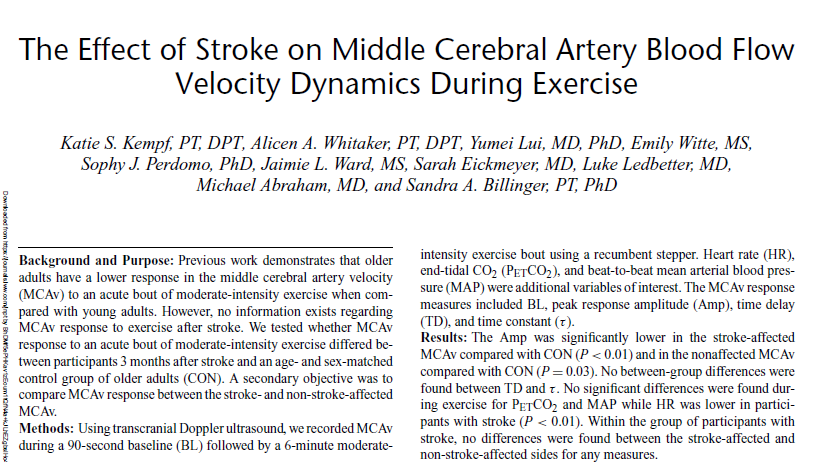The effect of stroke on middle cerebral artery blood flow velocity dynamic during exercise
2020-04-01Katie S. Kempf, PT,DPT, Alicen A. Whitaker, PT,DPT 2514
Read More
 Identifying Best Practices to Improve Evaluation and Management of In-Hospital Stroke: A Scientific Statement From the American Heart AssociationABSTRACT: This scientific statement describes a path to optimizing care for patients who experience an in-hospital stroke. Although these patients are in a monitored environment, their evaluation and treatment are often delayed compared with patients presenting to the emergency department, contributing to higher rates of morbidity and mortality.
Identifying Best Practices to Improve Evaluation and Management of In-Hospital Stroke: A Scientific Statement From the American Heart AssociationABSTRACT: This scientific statement describes a path to optimizing care for patients who experience an in-hospital stroke. Although these patients are in a monitored environment, their evaluation and treatment are often delayed compared with patients presenting to the emergency department, contributing to higher rates of morbidity and mortality. A systematic review and meta-analysis on transcranial Doppler in diagnosing ischemic cerebrovascular diseaseSuperb capabilities in diagnosing ICVD have been demonstrated by TCD, and it should therefore be applied in the clinic. The results are important to realize early diagnosis of ICVD and improve the prognosis of patients.
A systematic review and meta-analysis on transcranial Doppler in diagnosing ischemic cerebrovascular diseaseSuperb capabilities in diagnosing ICVD have been demonstrated by TCD, and it should therefore be applied in the clinic. The results are important to realize early diagnosis of ICVD and improve the prognosis of patients.- Cardiovascular Disease Risk Is Associated With Middle Cerebral Artery Blood Flow Velocity in Older AdultsCardiovascular Disease Risk Is Associated With Middle Cerebral Artery Blood Flow Velocity in Older Adults
